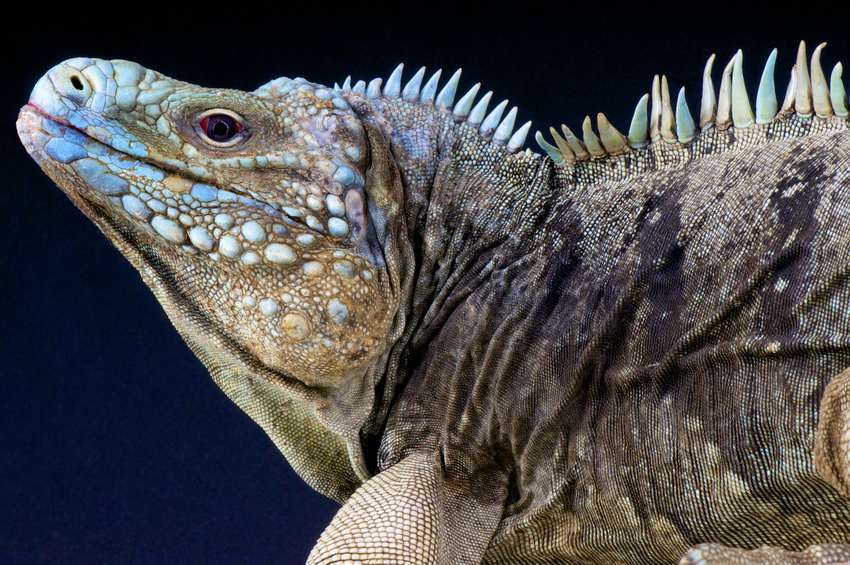Who They Are
Too unique and intelligent to qualify as mere things, the Grand Cayman Island’s Blue Iguanas are fascinating. Even for the Caribbean — where bright colored flowers, fish, reptiles and birds are almost common-place, — the Blue Iguana is a distinct species. With metallic blue skin and thorny dorsal spines, the five-foot lizard has a fantastical, computer-generated appearance, the possibility of extinction for the Grand Cayman resident became a distinct possibility in the late 1990s.
A result of human activities encroaching on the natural habitat of the Blue Iguana, numbers fell to a staggeringly low counts by 2002. Cats and dogs; non-native bird and snake species; and vehicles were responsible for a large sum of the depopulation. While adult Blue Iguana are hardy animals with the ability to defend themselves from most preditors, the smaller juvanile Blue Iguana are very susceptible. Likewise, adult Blue Iguana are no match for cars. Unfortunately, the heat captured by the pavement of roads and highways attract iguanas which leads to a large number of vehicular fatalities.
Blue Iguana Conservation Efforts
Noticing the declining numbers of Blue Iguana in the 80s and 90s, the Wildlife Conservation Society took it upon themselves to begin a captive breeding program, but its efforts were almost too late. By the time the program was ready to begin breeding the reptiles in captivity, Blue Iguana numbers had already fallen to below 15 in the wild. Fortunately, the program has been highly successful and Blue Iguana numbers are already back above 900.
Additionally, conservation areas have been set aside for the Blue Iguana. With reserves around the island that permit the lizards to live free of human influence in their natural habitat, conservation experts believe that the wild Blue Iguana is now here to stay.
Blue Iguana in Captivity
Surviving well in the wild, Blue Iguana are also becoming increasingly popular as pets. Because of their size, the Blue Iguana is not the reptile for everyone, but those people with enough space to house them find the animal to be a wonderful addition to the home. Bright and intuitive for reptiles, the Blue Iguana takes great interest in the activities of their owners, following them with their turquoise-blue-colored eyes.
Best kept outside, a pen for a Blue Iguana requires the fence be buried at least two feet into the ground because — like most legged reptiles — they are proficient diggers. Blue Iguanas have hardy appetites and are ferocious eaters preferring to feast in the morning before temperatures get too hot. They are primarily herbivores, eating leafy greens and vegetables, but they will also eat carrion when it is offered. However, unlike some other large lizards, they are not hunters.
A single Blue Iguana or a pair work best. Mixing two males is a particularly bad idea because they have a tendency to fight which leads to heavy scaring and unhealthy animals.

The comeback of the Blue Iguanas
- by: Dan
 January 12th, 2016
January 12th, 2016


